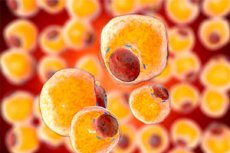New study reveals key cells regulating fat tissue formation
Sist anmeldt: 14.06.2024

Alt iLive-innhold blir gjennomgått med medisin eller faktisk kontrollert for å sikre så mye faktuell nøyaktighet som mulig.
Vi har strenge retningslinjer for innkjøp og kun kobling til anerkjente medieområder, akademiske forskningsinstitusjoner og, når det er mulig, medisinsk peer-evaluerte studier. Merk at tallene i parenteser ([1], [2], etc.) er klikkbare koblinger til disse studiene.
Hvis du føler at noe av innholdet vårt er unøyaktig, utdatert eller ellers tvilsomt, velg det og trykk Ctrl + Enter.

Understanding how adipose tissue forms and functions is critical to combating obesity and related metabolic diseases. However, adipose tissue, or body fat, behaves differently depending on its location in the body.
Take the mesentery, for example: a large, apron-like fatty tissue that hangs from the stomach and covers organs inside the peritoneum, such as the stomach and intestines. It not only stores fat, but also plays a role in immune regulation and tissue regeneration.
Mesenteric fat is associated with the "apple" body shape, which occurs when this fat depot is significantly expanded, increasing the risk of metabolic diseases. This expansion is not due to the formation of new fat cells, a process known as adipogenesis, but mainly through the enlargement of existing cells, a process called hypertrophy. This can lead to chronic inflammation and insulin resistance.
The limited capacity of mesenteric fat to form new fat cells despite a caloric surplus contrasts with subcutaneous fat and remains poorly understood. Now, scientists led by Professor Bart Deplancke from EPFL have identified a cell population in human mesenteric fat that inhibits adipogenesis. The discovery, published in the journal Cell Metabolism, provides new insights into the limited capacity of mesenteric fat to promote adipogenesis and has significant implications for obesity management.
The researchers used cutting-edge single-cell RNA sequencing to analyze cells from different human fat depots, isolating different cell subpopulations and testing their ability to transform into new fat cells. The study, supported by several institutions including CHUV, included more than thirty human donors to compare the different fat locations in detail.
The approach identified a population of cells present in mesenteric fat that may be key to explaining its unusual properties. These cells, called mesothelial cells, normally line certain internal body cavities as a protective layer.
Among these mesothelial cells, some strangely transitioned closer to mesenchymal cells, which can develop into a variety of cell types, including adipocytes (fat cells). This dynamic transition between cellular states may be a key mechanism through which these cells exert their influence on the adipogenic potential of mesenteric adipose tissue.
The study showed that the mesenchymal-like properties of these cells are associated with an increased ability to modulate their microenvironment, providing a regulatory mechanism to limit the expansion of adipose tissue. By switching between these two states, cells can thus influence the overall metabolic behavior of the mesenteric fat depot and its ability to store fat without causing metabolic complications.
Importantly, we also identified at least part of the molecular mechanism by which a new population of mesenteric cells influences adipogenesis. In particular, cells express high levels of insulin-like growth factor binding protein 2 [IGFBP2], a protein known to inhibit adipogenesis, and secrete this protein into the cell microenvironment. This, in turn, acts on specific receptors on neighboring stem and progenitor fat cells, effectively preventing them from developing into mature fat cells."
Radiana Ferrero (EPFL), one of the lead authors of the study “The findings have profound implications for the understanding and potential management of metabolically unhealthy obesity,” explains Pernilla Rainer (EPFL), another lead researcher on the study. "Knowing that mesenteric fat has a built-in mechanism for limiting the formation of fat cells could lead to new treatments that modulate this natural process. In addition, the research opens up the possibility of targeted therapies that could modulate the behavior of specific fat depots."
